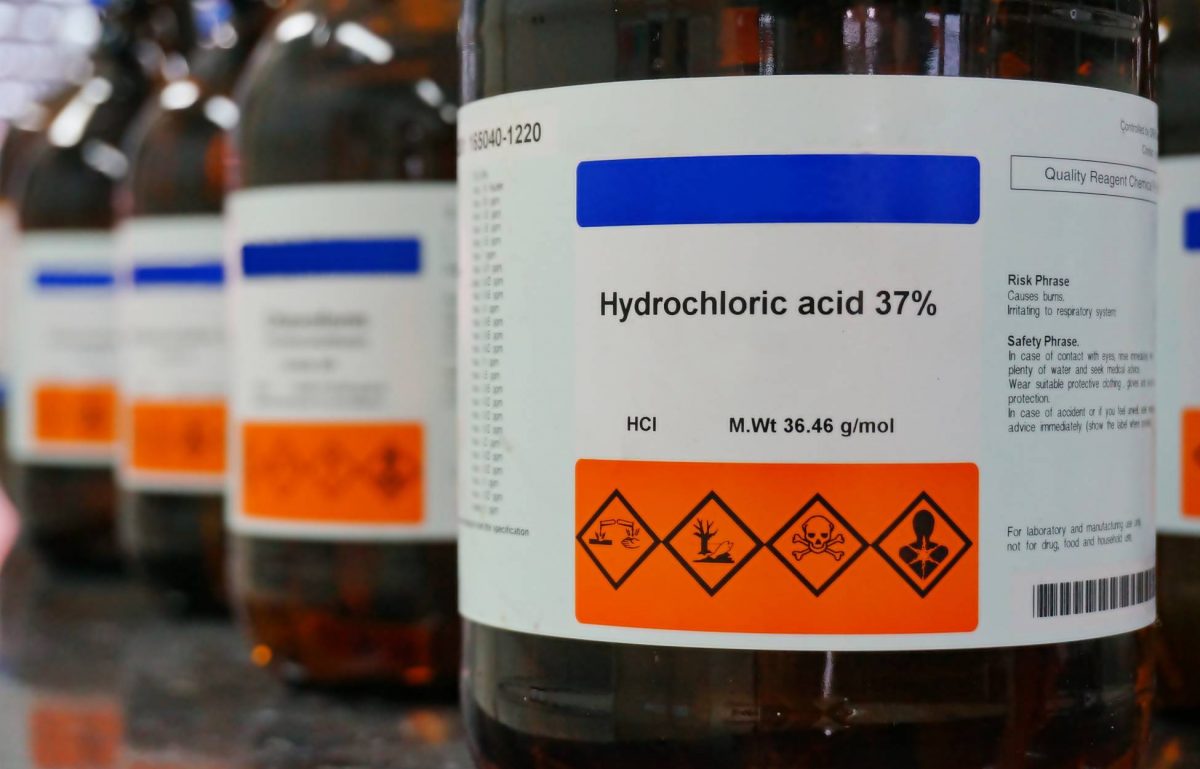Hydrochloric acid is a powerful substance that demands respect and proper handling to prevent accidents. Our guide covers safety precautions when handling hydrochloric acid to protect both you and the environment.
Know Your Substance
Hydrochloric acid is a common corrosive chemical in many industries. However, it doesn’t just dissolve stuff. One of the roles of hydrochloric acid in industrial processes is to regulate acidity levels in the food industry to maintain proper taste and texture. Awareness of its value and potential dangers sets the stage for prioritizing safety precautions when handling hydrochloric acid.
Wear Protective Gear
Personal protective equipment (PPE) is your first line of defense when dealing with hydrochloric acid. Essential gear includes gloves, goggles, and face shields to safeguard against splashes and spills. Full-body suits add an extra layer of protection, minimizing skin exposure.
Establish Ventilation
Proper ventilation is important when working with hydrochloric acid to prevent inhalation of harmful fumes. Well-ventilated areas reduce the risk of respiratory issues and allow fresh air to dilute hazardous gases. Install fume hoods and exhaust systems to enhance air quality and create a safer working environment.
Store Properly
Storing hydrochloric acid requires careful consideration to avoid accidents. First, use corrosion-resistant containers to prevent leaks and maintain the acid’s potency. Next, clearly label storage areas and containers to minimize confusion and ensure quick identification. Finally, keep storage spaces away from incompatible substances, which reduces the chance of dangerous reactions. Adhering to these storage guidelines safeguards both people and the environment from certain mishandling dangers.
Be Prepared for Emergencies
Accidents happen, even with the best safety measures in place. Therefore, knowing how to respond in an emergency is vital. First aid kits, emergency showers, and eyewash stations should be readily accessible in areas where workers use hydrochloric acid.
Additionally, training employees in emergency response procedures helps to boost their confidence in handling unexpected situations. Regularly reviewing emergency protocols guarantees readiness and minimizes panic during critical moments.
Dispose Correctly
Disposing hydrochloric acid waste demands attention to detail and adherence to regulations. Proper neutralization processes convert acidic waste into harmless substances and reduce the disposal’s environmental impact.
Work with licensed waste disposal companies to ensure compliance with local laws and prevent contamination. By prioritizing responsible waste disposal, companies demonstrate a commitment to environmental stewardship and regulatory compliance.
Handling hydrochloric acid demands careful planning and implementation of safety precautions. From wearing protective gear to ensuring proper storage, each step contributes to creating a safe work environment. By following these guidelines, you can confidently manage hydrochloric acid while minimizing risk and promoting safety awareness.













